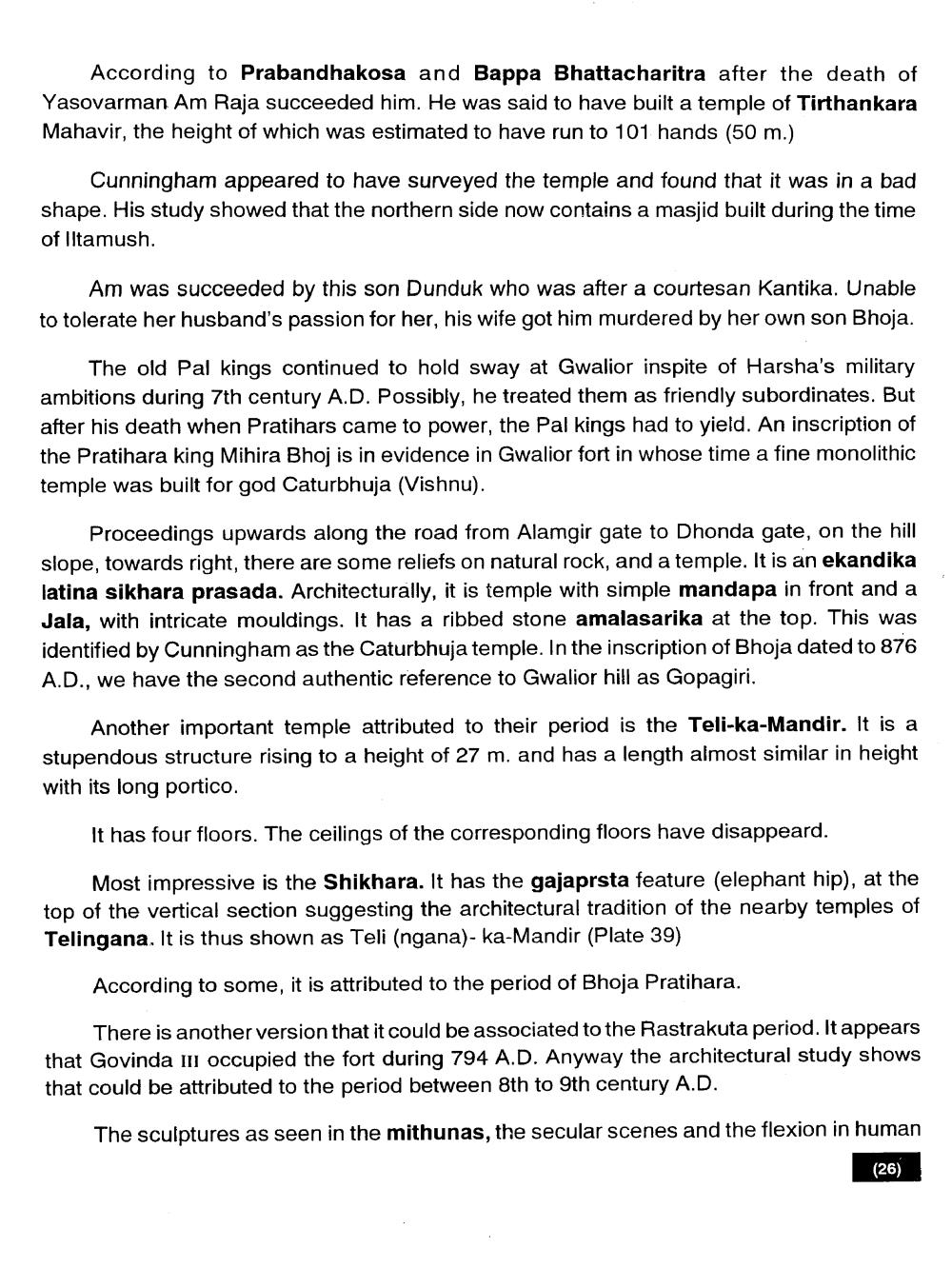________________
According to Prabandhakosa and Bappa Bhattacharitra after the death of Yasovarman Am Raja succeeded him. He was said to have built a temple of Tirthankara Mahavir, the height of which was estimated to have run to 101 hands (50 m.)
Cunningham appeared to have surveyed the temple and found that it was in a bad shape. His study showed that the northern side now contains a masjid built during the time of Iltamush.
Am was succeeded by this son Dunduk who was after a courtesan Kantika. Unable to tolerate her husband's passion for her, his wife got him murdered by her own son Bhoja.
The old Pal kings continued to hold sway at Gwalior inspite of Harsha's military ambitions during 7th century A.D. Possibly, he treated them as friendly subordinates. But after his death when Pratihars came to power, the Pal kings had to yield. An inscription of the Pratihara king Mihira Bhoj is in evidence in Gwalior fort in whose time a fine monolithic temple was built for god Caturbhuja (Vishnu).
Proceedings upwards along the road from Alamgir gate to Dhonda gate, on the hill slope, towards right, there are some reliefs on natural rock, and a temple. It is an ekandika latina sikhara prasada. Architecturally, it is temple with simple mandapa in front and a Jala, with intricate mouldings. It has a ribbed stone amalasarika at the top. This was identified by Cunningham as the Caturbhuja temple. In the inscription of Bhoja dated to 876 A.D., we have the second authentic reference to Gwalior hill as Gopagiri.
Another important temple attributed to their period is the Teli-ka-Mandir. It is a stupendous structure rising to a height of 27 m. and has a length almost similar in height with its long portico.
It has four floors. The ceilings of the corresponding floors have disappeard.
Most impressive is the Shikhara. It has the gajaprsta feature (elephant hip), at the top of the vertical section suggesting the architectural tradition of the nearby temples of Telingana. It is thus shown as Teli (ngana)- ka-Mandir (Plate 39)
According to some, it is attributed to the period of Bhoja Pratihara.
There is another version that it could be associated to the Rastrakuta period. It appears that Govinda III occupied the fort during 794 A.D. Anyway the architectural study shows that could be attributed to the period between 8th to 9th century A.D.
The sculptures as seen in the mithunas, the secular scenes and the flexion in human
(26)




